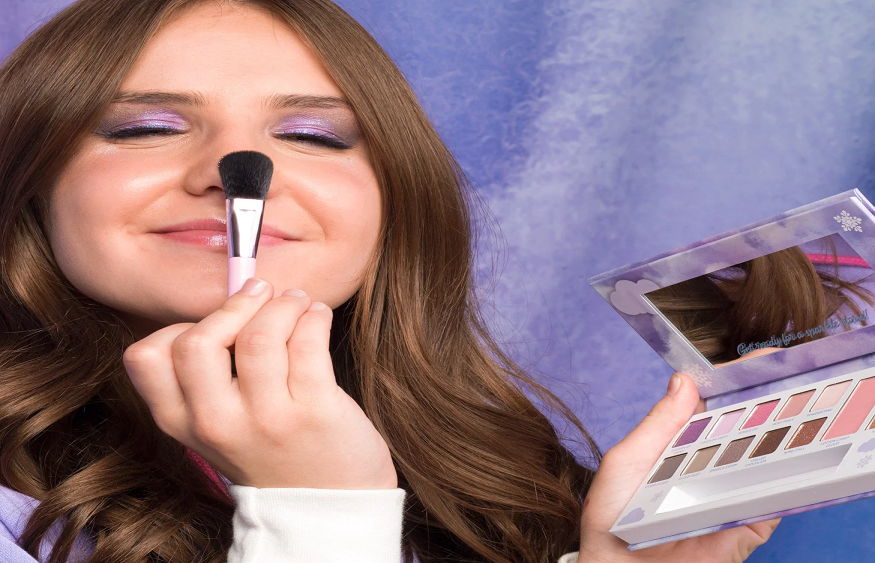According to the market research company, facial care accounts for more than half (51%) of the total market. With retail sales estimated at $6.5 billion and growth rate [ 1 ] estimated at 5.8% over the next five years, the level of sales is expected to reach $7.2 billion by 2020 The success of this category can be explained by the large number of new products, more than two-thirds (68%) of the total skin care products launched in South Korea in the period 2015-2016 [ 2 ] were facial care products, according to Mintel’s Global New Products Database (GNPD) .
After facial care, makeup is the second largest category in the South Korean beauty market , worth approximately $2.3 billion in 2017. According to Mintel , this market is driven by active and highly engaged consumers with makeup spending reaching $45 per capita in 2017, compared to $43 in the UK and $37 in the US [ 3 ] , more than double the estimated global average per capita spending of $21. With an estimated compound annual growth rate of 8.1% over the next five years, the market is expected to reach $2.8 billion by 2020.
Facial Care Trends
According to Jane Jang, Senior Beauty Analyst at Mintel , 2017 will be a year of extreme segmentation for face care with increasingly targeted and multifunctional products, meeting the needs of knowledgeable and discerning consumers.
As the lines blur in every way possible to create new experiences and continued excitement around skincare, Mintel expects the emergence of hybrid compositions – such as exfoliating moisturizers, whitening anti-wrinkle creams and lightweight oil nourishing serums – as well as transformative textures, such as powders becoming serum, oil becoming foam or water becoming cream.
A strong focus on quality and safety fuels a fascination with natural ingredients, in line with ‘Hanbang’, the ancient Korean herbal medicine ,” adds Jane Jang. According to Mintel’s GNPD , 69% of face care launches in 2016 in South Korea carried claims about botanicals.
Besides, the mask craze doesn’t seem to be slowing down . Beyond the basic moisturizing virtues, the masks are now designed for each part of the body and each member of the family, babies included, to target all possible needs and occasions.
Makeup trends
When it comes to makeup, Korean rituals focus on lips and complexion. According to Mintel’s GNPD , lip makeup launches accounted for 30% of cosmetic product launches in Korea in 2016, compared to a global average of 27%. Next come foundations and illuminating liquids, representing 16% of cosmetic product launches in South Korea.
The boom in hybrid formats has spawned a host of new lip products, such as lip syrups, lip liners, lip-quids and gel sticks ,” says Jane Jang.
Additionally, South Korean brands are increasingly focusing on water-based gels, jellies, mousses and oils to enhance the sensory experience of consumers. In fact, the trend of hybrid and transformative textures and formats is borrowed from skincare.
Mintel , finally notes that, although cushion compacts have been emblematic of the dynamism of the Korean market in recent years, they are increasingly a trend specific to Western markets. From October 2013 to September 2014, 80% of international cushion launches took place in the Asia-Pacific region, compared to 20% in Europe and the United States. Between October 2015 and September 2016, the picture turned around and 46% of cushion launches occurred in the Asia-Pacific region compared to 54% in Europe and the United States. The latest launches in South Korea offer multifunctional claims (hydration, anti-aging, whitening, UV protection), foundation-like properties, and innovations in hygiene and application.
The popularity of South Korean beauty products is due to their high performance combined with fun packaging, great sensoriality, as well as affordable prices. Grabbing the attention of bloggers, vloggers and the media, the K-beauty wave is spreading among retailers outside of Asia. While makeup products will be the core of active innovation, facial care remains the real driver of K-beauty ,” concludes Jane Jang.

